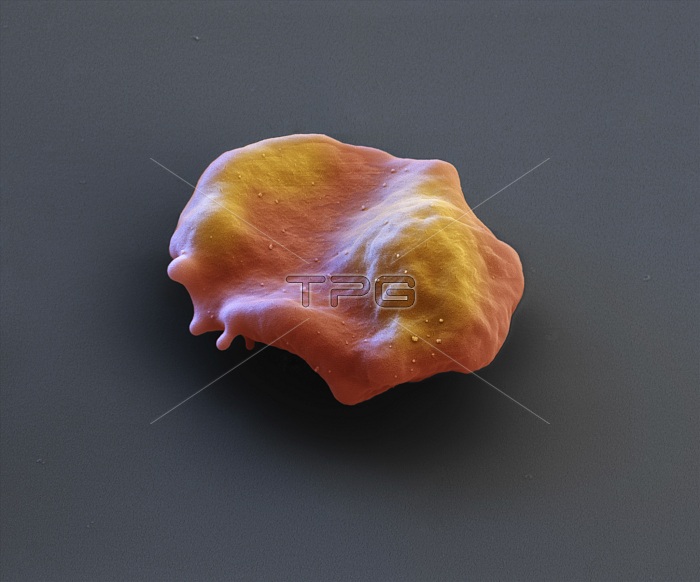
Malaria-infected red blood cell. Coloured scanning electron micrograph (SEM) of a single red blood cell (erythrocyte) infected with a trophozoite stage (yellow) of the malaria parasite. The Plasmodium parasite that causes malaria goes through several stages in its life cycle, involving liver cells and blood cells. The sporozoite stage is injected into humans by a mosquito. After developing in liver cells, merozoites are released that infect red blood cells. The trophozoite stage in red blood cells digests the haemoglobin in the cells, causing anaemia in the host. Replication then releases merozoites that invade other red blood cells. It is this periodic release of merozoites that causes the severe cyclic fevers of malaria. Magnification: x9300 when printed at 10 centimetres across.
| px | px | dpi | = | cm | x | cm | = | MB |
Details
Creative#:
TOP19971994
Source:
達志影像
Authorization Type:
RM
Release Information:
須由TPG 完整授權
Model Release:
N/A
Property Release:
N/A
Right to Privacy:
No
Same folder images:

 Loading
Loading